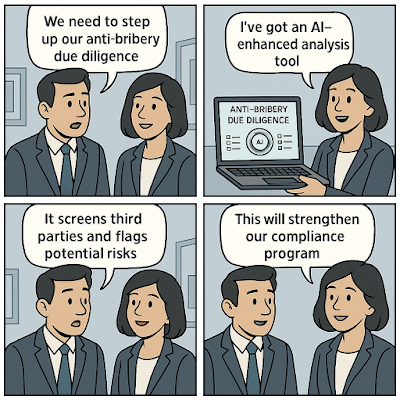How to Offer AI-Enhanced Anti-Bribery Due Diligence Tools
How to Offer AI-Enhanced Anti-Bribery Due Diligence Tools
In today’s global business environment, companies face growing pressure to detect and prevent bribery and corruption across their operations and third-party networks.
AI-enhanced anti-bribery due diligence tools can help organizations automate risk screening, flag suspicious activities, and meet compliance obligations more efficiently.
This guide explains how to develop and deliver these tools effectively.
Table of Contents
- Why Anti-Bribery Due Diligence Matters
- Key Features of an Effective Tool
- Essential Data Sources
- Steps to Build the Platform
- Future Trends and Innovations
Why Anti-Bribery Due Diligence Matters
Effective anti-bribery due diligence helps companies:
- Comply with regulations like the FCPA, UK Bribery Act, and Sapin II
- Identify and mitigate third-party corruption risks
- Protect their reputation and avoid costly fines
- Enhance investor confidence and stakeholder trust
- Streamline compliance and risk management programs
Key Features of an Effective Tool
AI-enhanced due diligence platforms should provide:
- Automated screening of third parties, vendors, and partners
- Natural language processing (NLP) for adverse media monitoring
- Risk scoring based on public records, watchlists, and regulatory data
- Customizable workflows and risk assessment templates
- Comprehensive audit trails for regulatory reporting
Essential Data Sources
To power robust risk assessments, tap into:
- Global sanctions and watchlists (OFAC, UN, EU)
- Politically exposed persons (PEP) databases
- Adverse media feeds and litigation records
- Company registries and beneficial ownership databases
- Custom questionnaires and third-party disclosures
Steps to Build the Platform
1. Define risk categories and compliance requirements.
2. Build data ingestion pipelines with global coverage.
3. Develop machine learning models to detect red flags and generate risk scores.
4. Design intuitive dashboards and reporting tools for compliance teams.
5. Pilot with key clients and refine based on feedback.
6. Ensure scalability, security, and regulatory alignment.
Future Trends and Innovations
Anti-bribery tools are evolving with innovations like:
- AI explainability to improve transparency
- Blockchain-based due diligence records
- Behavioral analytics to detect suspicious patterns
- Integration with enterprise risk management platforms
Organizations adopting these technologies will strengthen their defenses against corruption and stay ahead of regulatory scrutiny.
External Resources
– Explore global due diligence solutions.
– Access risk intelligence data.
– Learn about regulatory risk solutions.
– Stay updated on anti-financial crime news.
Important keywords: anti-bribery, due diligence, compliance, third-party risk, AI compliance tools
